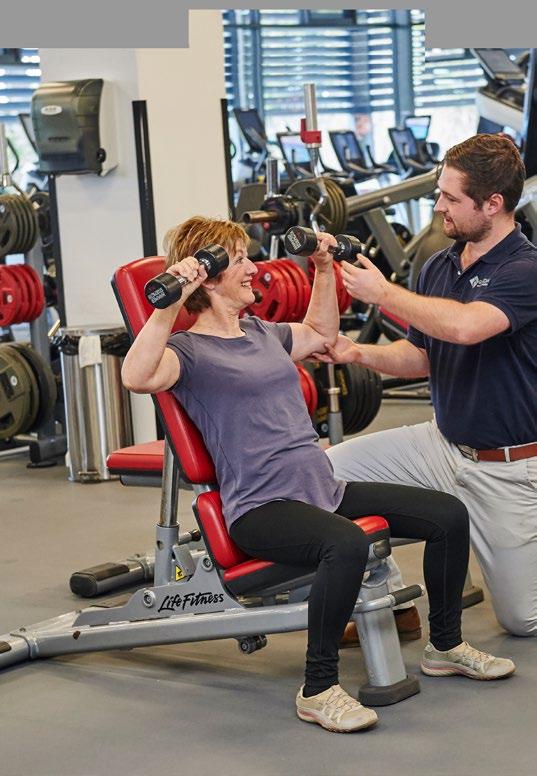
5 minute read
You are strong and adaptable
You may have been told before that you are weak, have muscles that don’t work properly, you are fragile and unstable. As human beings, we are all different, we are all variable. Look around you, we all are different sizes, shapes, colours - we all are built differently. We are all meant to move differently.
Let’s look at the spine, as this is often viewed as weak and unstable. However, this belief has been socially constructed and initially proposed by some very flawed research.
Advertisement
Studies previously showed that if we take a pig or sheep spine, place it into a mechanical jig in a laboratory and then repetitively bend it, after approximately >80,000 bending motions, the disc can herniate. This is an animal spine - not a human spine! This is a dead spine - not a spine within a living, breathing human being that has the ability to adapt!
But we ran with this, and we found ourselves living in this world where lots of people feel the need to protect their backs, fearing that bending and lifting with a rounded back is harmful - this is not the case! The average spine can withhold 2,000lbs of pressure. The average spine is inherently stable and capable of handling huge amounts of bending and stress.
This doesn’t mean your back might not hurt when moving it. But, having pain doesn’t mean something in your back is damaged. It is scary being in pain, and normal to think that something is wrong, and have a feeling of fragility. But the human body is robust and adaptable, something we can really use to our advantage when developing a plan to help you with your pain and disability.
You are adaptable!
We can all adapt. However, we should provide a caveat – adaptability is finite, there is a line, and this emphasises the importance of an individualised exercise program.
When you are in pain, of course, your ability to tolerate movement and physical activity will likely drop. Things you could previously do with ease now become painful. Most people in pain avoid doing painful things; however, when you have pain for long time, this isn’t necessarily the answer - what we will be doing is decreasing our ability to tolerate stress and physical activity.
To increase your ability to tolerate stress, we need to start stressing you again – it’s just a case of finding the right starting point. But a reassuring thing to remember here is that we can respond positively to stress, because as humans, we are awesome, and we can adapt well to that stress.
Think of calluses on your hands. If we worked in an office and then were to perform a 12-hour shift of bricklaying tomorrow, our hands would get cut and they would be sore. However, if we started to gradually perform some bricklaying, an hour here, an hour there, gradually building up the time - our hands would start to develop calluses and they would respond positively to stress to allow us to do more of thing that we want to be able to do. However, if we go too hard too soon, we get blisters on our hands – so we need to make sure we find the right starting point and progress sensibly.
Our bodies also have the amazing ability to heal itself over time. The rate of spontaneous regression for a lumbar disc extrusion is 70% and 41% for a disc protrusion. This is just another example of our adaptability, and that our body is strong and can be trusted!
You went through adaptation to get into pain… You can go through adaptation to get out of pain
We add different types of stress - physical, emotional, work - and we slowly adapt to them over time. Our alarm system (pain) will slowly start to calm down because it doesn’t see the same stress as much of a threat.
We call the concept of adapting to the same stimulus over time…Habituation. A simple way to understand this is to think of a Kick Boxer. They learn to kick heavy bags, conditioning their body to the task. When they first start kicking the bag, it will hurt, but as they continually do this and expose themselves to that same input, they then adapt and it no longer hurts anymore.
There are lots of studies that highlight our ability to adapt. Such as subacromial bursal thickening occurring in the shoulder with increased training load of open ocean swimmers, but showing no correlation to pain – instead demonstrated an positive adaptation to load. Or another study that showed that forward bending (>30 degrees) was associated with lower low back pain intensity in blue collar workers – again, showing an ability to adapt to the movements and tasks we do and are used to.
We could go on and on and provide endless examples of how amazing we are at adapting. This can be a powerful message to grasp as it can be reassuring and help us understand the importance of exercise and physical activity in helping you learn to tolerate the movements and tasks that you currently have difficulty with. We can find the right starting point, set out a graded plan, and allow the human body to do its wonderful thing!
References:

Chiu, C.C et al. (2014). The probability of spontaneous regression of lumbar herniated disc: a systematic review. Clinical Rehabilitation. Nijs, J et al. (2015). Exercise therapy for chronic musculoskeletal pain: Innovation by altering pain memories. Manual Therapy. Couanis, G., Breidahl, W., & Burnham, S. (2015). The relationship between subacromial bursa thickness on ultrasound and shoulder pain in open water endurance swimmers over time. Journal of Science and Medicine in Sport.
Villumsen, M et al. (2014). Are forward bending of the trunk and low back pain associated among Danish blue-collar workers? A cross-sectional field study based on objective measures. Ergonomics.







